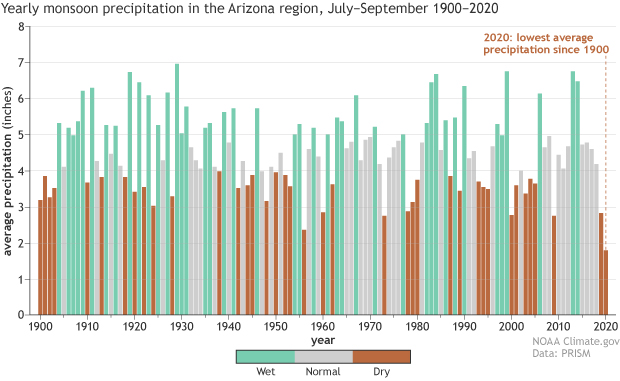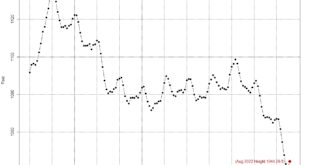 From the climate.gov article Western Drought 2021 Spotlight: Arizona by Tom Di Liberto (7/29/2021):
From the climate.gov article Western Drought 2021 Spotlight: Arizona by Tom Di Liberto (7/29/2021):
Looking back even farther by using a drought indicator known as the Standardized Precipitation Index, the current drought in Arizona is also the worst on record back to the late 1800s. Going back even farther than THAT by using tree rings across the Southwest as stand-ins for soil moisture, the current drought over the entire region is one of a handful of the worst droughts in the last 1200 years. Other especially bad droughts occurred in the late 1500s and late 1200s (known as the Great Drought). Basically, this is a long-winded way of saying the current drought in Arizona and the Southwest is bad no matter if you look back 10 years, 100 years, or 1,000 years.
The graph copied here shows that it has been 6 years since a wet year with 2020 precipitation the lowest since 1900. And, of course:
According to the Climate Science Special Report, temperatures across the Southwest have increased by 1.61 degrees Fahrenheit since the first half of the 20th century. These increases in temperature contribute to aridification in the Southwest by increasing evapotranspiration, lowering soil moisture, reducing snow cover and impacting snowmelt.
Looking to the future, temperatures in the Southwest are projected to increase by the end of the century by around 5 degrees Fahrenheit if carbon dioxide emissions follow a lower path and up to 9 degrees if emissions follow a much higher path. Increasing temperatures can make soils even drier, amplifying drought.
There are other graph in the article but no direct links to data. Still, there is good information and plenty of material for a QL course.
